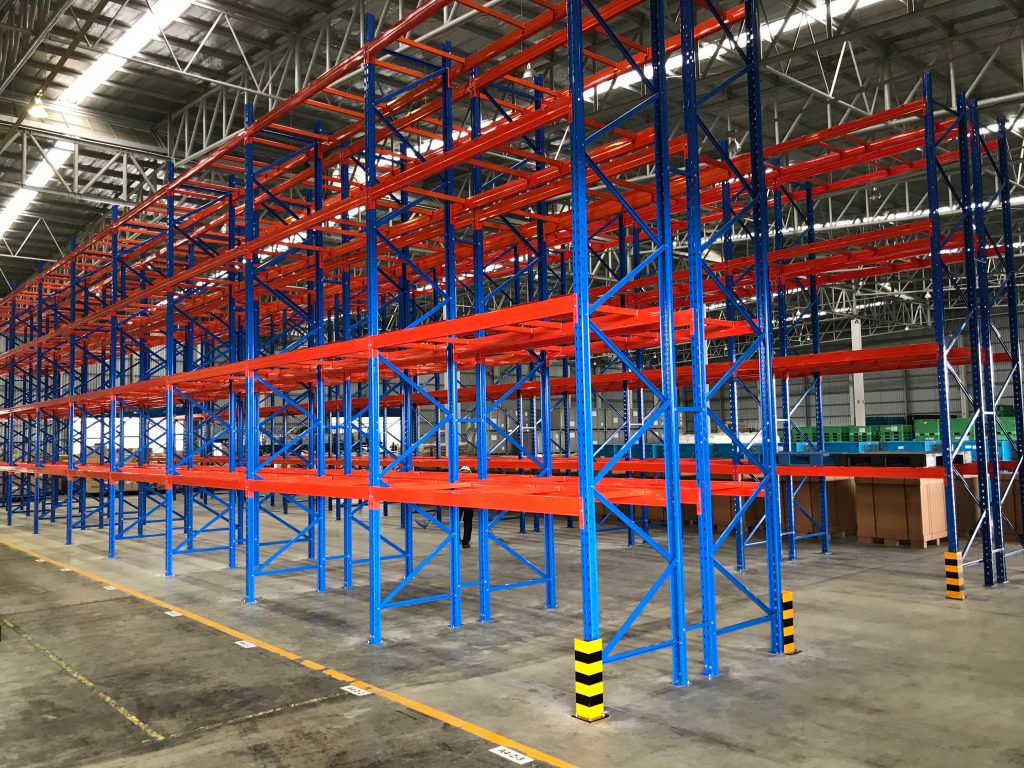More and more warehouses are opting to try warehouse pallet racking. This has been widely used, and businesses prefer this as the more optimal way to improve their storage. It’s easy to see why pallet racking has been so used; it’s able to create various arrangements. Each of these can properly suit the needs of the space and can also be used to suit the layout of a particular location if that’s needed.
On top of that, this is very easy to assemble and is considered a cost-effective storage method for businesses too. Pallet racking helps facilitate the storage of goods in packing; this also keeps costs within the warehouse down to a minimum. Since these can help boost efficiency and help with storage space within a warehouse, it’s understood to sough-after this storage style. But what do warehouses need to know in terms of building a pallet rack? This helpful guide will answer the most common questions about pallet racking.
How do you build a pallet rack?
Having a pallet rack in your warehouse can be vital. It can provide a safe and secure way to store pallets and rapidly turn products. It can also provide a more efficient way to retrieve products. However, if your pallet rack is not built correctly, it could cause damage to your building and your products. You should take a few steps to ensure your pallet rack is built properly and meets your needs.
Pallet racks are made from heavy-duty rails and beams. These beams can be decked with wire decking for added support. They also help prevent pallets from falling through. When designing a pallet rack, your business will need to calculate the height, depth, beam width, pallet depth, and rack width. The beam height is a major consideration. It is also important to account for overhead clearance and for the height of your pallet load. The load height will affect the pallet rack’s capacity.
What is the standard pallet racking height?
Choosing the right pallet racking height is an important aspect of your pallet racking system. Several factors will affect the height of the rack, including the height of the ceilings and the reach of forklifts. It is best to consult an experienced pallet-racking supplier to ensure that your pallet racks are correctly sized. The height-to-depth ratio is a good way to determine the optimal height for your pallet racking system. It is calculated by dividing the rack’s height by the standard upright’s depth.
Some warehouses have unusual angles or sloped roofs that may require a different height for the rack. The height-to-depth ratio also includes the amount of clearance between racks. You should choose pallets with a height-to-depth ratio of at least six to one. This will allow for adequate clearance between pallets and load beams. For example, a 96″ beam will hold two 40″ x 48″ pallets.

Does pallet racking need to be bolted down?
Simply put, it does need to be. Securing your pallet racks will immediately improve the working conditions within the warehouse and keep it safe. There are warehouse standards in Australia; legally speaking, you’ll need to have these bolted down. All rack columns within the warehouse and floor need to incorporate strong bolts. Installing foot plates or a base will keep the racks secure, which means that liability is reduced.
What is the dimensions of pallet racking?
Whether you’re looking to purchase pallet racking, upgrade your current system, or install new equipment, you’ll need to know the exact dimensions of the system you’re considering. These dimensions will help you to calculate the optimal height and length for your racks. Pallet racking beams come in a variety of standard lengths. These lengths are commonly measured in metres. The height of the beam is also important to consider. For example, if you want to store two standard 122 × 100 pallets, you’ll need a 2.4 metre beam.
Similarly, if you’re looking to store four pallets, you’ll need a 3.6-metre beam. These larger beams are made from more steel, increasing the weight capacity.In addition to the height of the beam, you’ll also need to consider the width. The regular aisle width is 3.7 metres or less. If you’re using a reach truck, you’ll need to include a few extra inches for the front pallet overhang.




